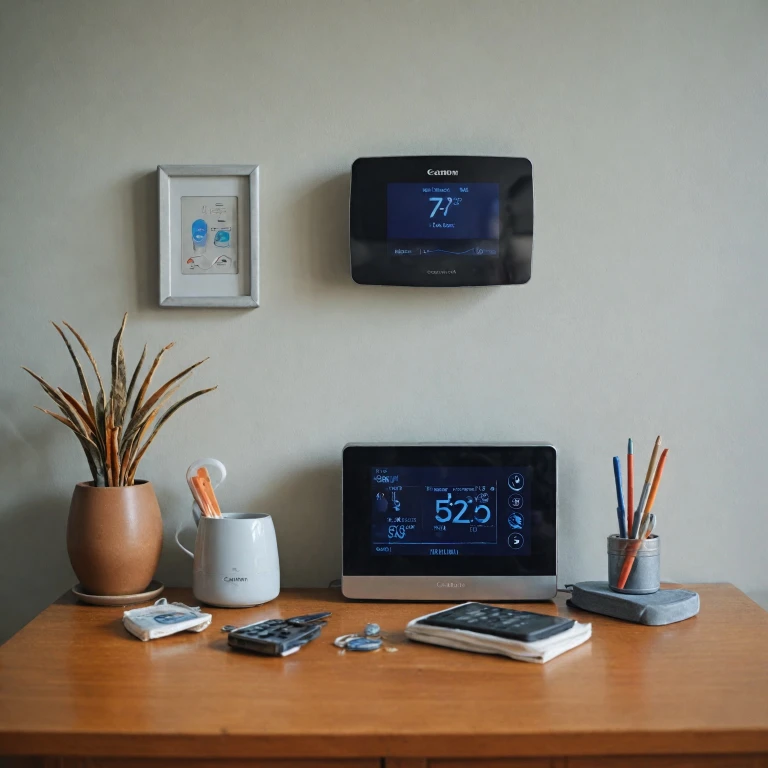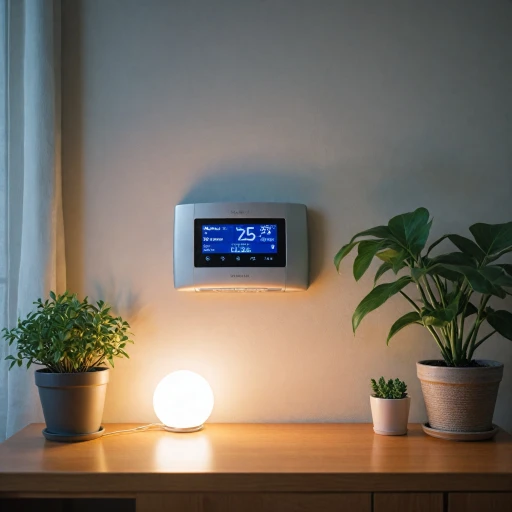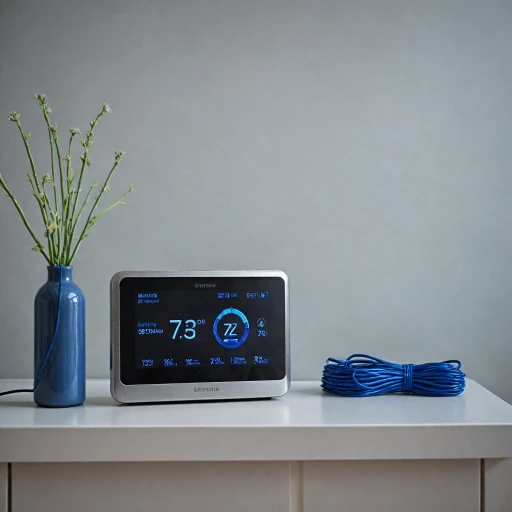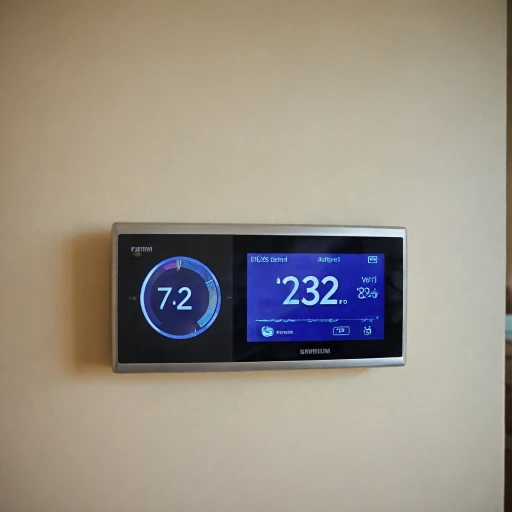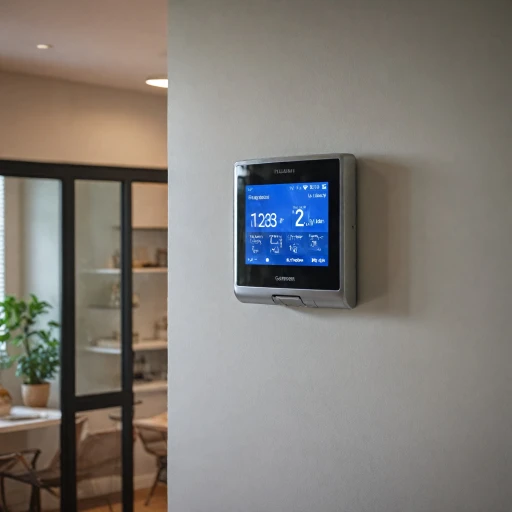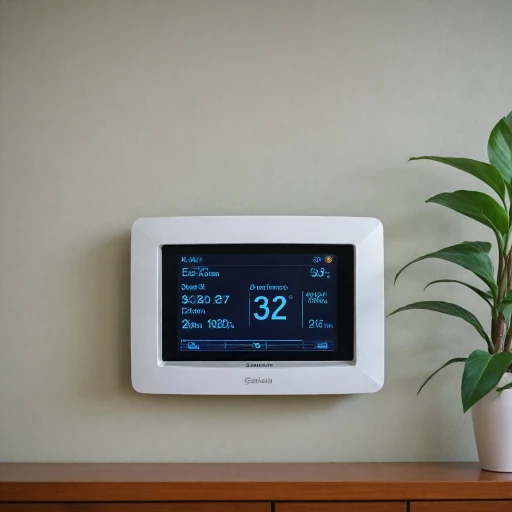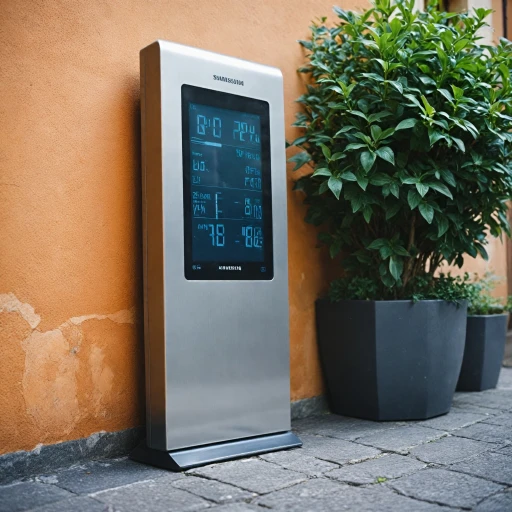
What is a Smart Thermostat?
Getting to Know Smart Thermostats
A smart thermostat is a modern device designed to optimize the heating and cooling of your home. Unlike traditional thermostats that merely adjust the temperature, smart thermostats come equipped with advanced features to enhance energy control and efficiency.
These units allow for remote temperature control through smartphone apps, integration with home automation systems, and in some models, adaptability to your daily patterns. This level of control ensures that your HVAC system operates efficiently, potentially leading to energy savings and reduced costs.
The cost of a smart thermostat unit varies based on features and brand. Popular models like the Google Nest offer user-friendly operation and integration capabilities that make them an attractive choice for many homeowners.
Thinking about the installation? It's also crucial to consider thermostat replacement costs and whether to opt for a DIY or professional installation. Installing these devices not only involves connecting them to your HVAC system but also might require understanding specific wiring configurations, such as the role of the correct wire setup.
As you continue to explore the benefits and functions of smart thermostats, keep in mind how such an installation can lead to reduced heating and cooling energy consumption and potential savings in the long run.
Factors Influencing Installation Costs
Key Elements Influencing the Expenses of Smart Thermostat Installation
Understanding the financial implications of installing a smart thermostat is crucial for those interested in enhancing their home's comfort and efficiency. Several factors will ultimately influence the overall costs of thermostat installation, whether you're replacing an existing thermostat or setting up a completely new system.- System Compatibility and Wiring: Before proceeding with the installation, it's important to ensure your existing HVAC system is compatible with the new smart thermostat. Modern thermostats often require a C-wire for continuous power, which older systems may lack. This could necessitate additional wiring efforts, potentially increasing installation costs. To understand these requirements better, consult a wiring diagram for your furnace thermostat.
- Labor and Professional Services: The decision to pursue DIY installation or hire professional thermostat installers will greatly impact your costs. A professional installation ensures precision and functionality but may come with a significant labor fee. On the other hand, DIY projects might save some money if executed correctly.
- Cost of the Unit: The choice of thermostat model can also influence the installation costs. Units with advanced features such as remote control, energy monitoring, and integration with other smart home devices may come at a higher price point but typically offer more benefits such as potential energy savings.
- Heating and Cooling Zone Configuration: The complexity of your heating and cooling setup could affect costs, particularly if zoning is involved. Multiple zones might require multiple smart thermostats or additional accessories, leading to increased expenses.
DIY vs. Professional Installation
Choosing Between DIY and Professional Help
Deciding whether to tackle the thermostat installation yourself or to hire a professional installer is crucial. Both options have distinct pros and cons. Let's examine them to guide your decision. DIY Installation:- Cost Savings: One of the main advantages of a DIY install is the potential to save on labor costs. Tackling the project yourself can significantly reduce the overall thermostat cost, especially if you're familiar with HVAC systems and wiring.
- Skills Required: If you choose the DIY route, having some technical skills is a plus. You must understand basic wiring, manage the thermostat unit, and sync it with your system for accurate temperature control. For those curious about the intricacies, you might find helpful information on understanding your Daikin thermostat.
- Time Investment: Installing smart thermostats yourself may take several hours as you navigate through steps and potential troubleshooting.
- Expertise and Assurance: With a professional install, you buy peace of mind. Professionals bring the expertise necessary to handle complex systems, adjust any necessary components like heat pumps, and ensure the thermostat unit is integrated correctly.
- Accurate Installation: Incorrect installation can lead to efficiency issues with heating and cooling. A professional guarantees that the device works optimally, saving you more energy and money in the long run.
- Free Estimates: Many installers offer free estimates, giving you a clear picture of the installation cost which includes labor, thermostat replacement, and system alignment.
Potential Energy Savings
Energy Efficiency and Smart Thermostats: A Pathway to Savings
Investing in a smart thermostat can have a substantial impact on your energy bills. These advanced devices optimize your HVAC system by adjusting the temperature based on your habits and preferences. But how exactly do they translate into cost savings?
- Adaptive Control: Smart thermostats learn your daily patterns and automatically adjust settings, reducing energy consumption during times when heating or cooling isn’t necessary.
- Remote Access: Many smart units enable you to control your system through a smartphone app, allowing you to fine-tune preferences while on the go.
- Energy Reports: These thermostats provide insights into your energy usage, helping you identify potential costs to cut and enhancing your awareness of consumption patterns.
- Zoning Capabilities: Advanced models offer zoning features enabling independent temperature settings for different areas in your home, ensuring enhanced comfort and efficient energy use.
By leveraging these features collectively, households can potentially save a significant percentage on their annual heating and cooling costs. Reports suggest savings can range from 10% to 12% on heating and 15% on cooling (source: Energy Star).
Given the variety of models available, it's important to consider both the initial thermostat cost, and the long-term savings recovered through improved energy efficiency. This makes the investment in smart thermostats a financially wise decision for most homeowners.
Comparing Popular Smart Thermostat Models
Evaluating Well-Known Smart Thermostat Options
When it comes to choosing the right smart thermostat for your home, there are several options available, each with its own unique features and price points. Comparing the most popular models can help you assess which ones may offer the best balance of cost, functionality, and compatibility with your heating and cooling systems.- Google Nest Learning Thermostat
- Features: This unit is lauded for its learning capabilities, automatically adjusting to your preferred temperatures and helping save energy by learning your schedule. It also offers remote control via an app, which enhances convenience.
- Compatibility: It's versatile with most HVAC systems.
- Cost: Installation costs can vary, and while the initial outlay may seem steep, potential energy savings over time can make it a worthwhile investment.
- Ecobee SmartThermostat with Voice Control
- Features: With built-in smart speaker functionality, this thermostat allows voice control via Amazon Alexa. It includes a room sensor to help manage hot or cold spots and integrate with home automation systems.
- Compatibility: Works with a wide range of home systems, especially beneficial for those seeking comprehensive home automation compatibility.
- Energy Savings: Provides energy usage insights to help manage costs.
- Honeywell Home T9 Smart Thermostat
- Features: The Honeywell T9 stands out with its unique multi-room sensor that ensures even heating and cooling. The unit provides insights into energy consumption patterns.
- Installation: While it can fit easily with pre-existing systems, installation can require some wiring expertise. Professional installation can help sidestep any potential difficulties here.
- Emerson Sensi Touch Wi-Fi Smart Thermostat
- Features: Known for its easy installation process, this thermostat offers a quick DIY setup, compatibility with Amazon Alexa, and energy-saving options.
- Cost: This thermostat typically has a lower cost compared to others, balancing affordability with essential smart features.
Tips for Choosing the Right Smart Thermostat
Finding the Perfect Smart Thermostat for Your Needs
Choosing the right smart thermostat can seem overwhelming, given the variety of models available and factors such as price, features, and compatibility with your HVAC system. Here's a guide to help you make an informed decision.- Identify HVAC System Compatibility: Before making a purchase, check if the smart thermostat is compatible with your existing HVAC system, including heating, cooling, and auxiliary units like heat pumps. Each system may require different wiring, so it's essential to ensure your chosen model will work seamlessly.
- Assess the Features: Look for features that meet your specific needs, such as integration with smart home devices, remote control via smartphone apps, and energy-saving capabilities. Units such as the Google Nest offer advanced programming and voice control, which can enhance comfort and usability.
- Consider the Cost: The cost of the thermostat itself is important, but don’t forget to factor in the installation cost. While some can install smart units themselves, others may find professional installation worthwhile due to complex wiring and labor costs.
- Research Energy Savings: Smart thermostats can help save money on energy bills by optimizing heating and cooling schedules. Make sure to choose a model that offers potential energy savings by learning your patterns and adjusting the temperature accordingly.
- Get Free Estimates: Contact local thermostat installers to get free estimates. Knowing the average cost can help you budget for the installation and understand what services are included, such as removal and replacement of your old thermostat.
